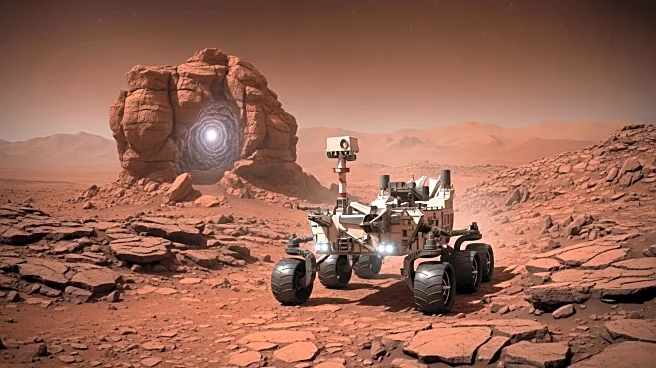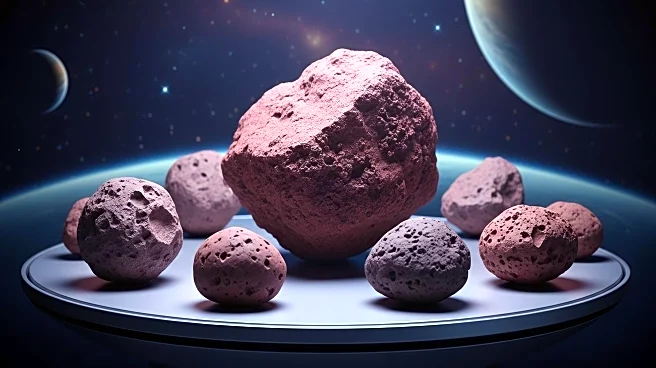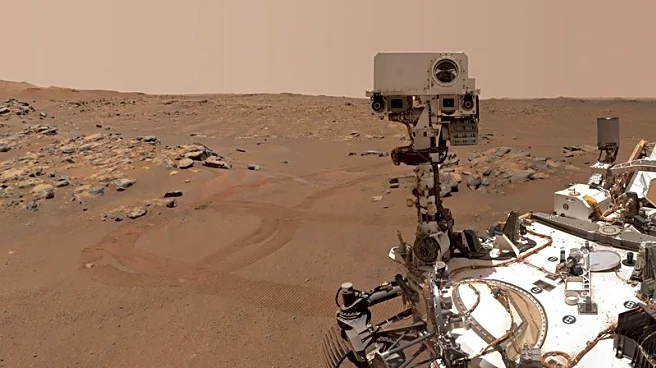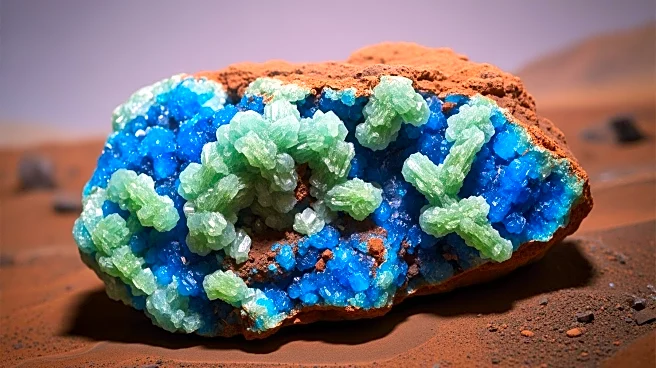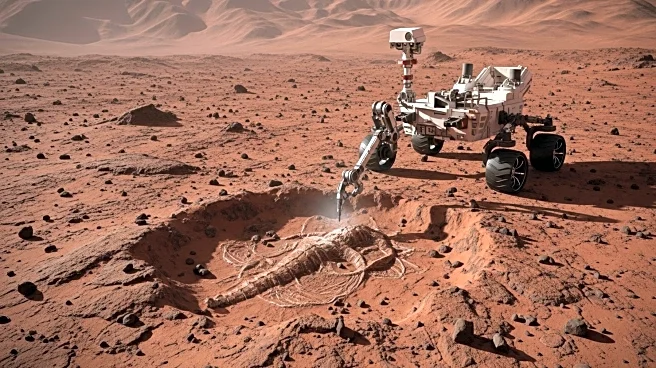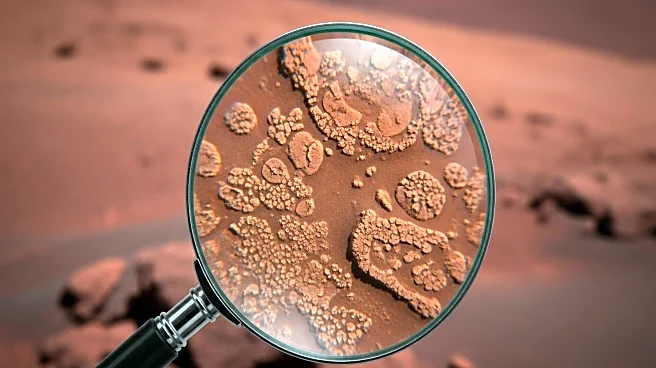What's Happening?
NASA has announced a significant discovery from the Perseverance Mars rover, which has identified potential biosignatures in a rock sample named Sapphire Canyon. This sample, collected from the Jezero Crater, shows signs of vivianite and greigite, minerals often associated with microbial life on Earth. The discovery suggests that Mars may have hosted life several billion years ago, although it does not confirm the presence of life today. The findings were made using Perseverance's onboard instruments, including X-ray lithochemistry and NASA's SHERLOC scanner. The data has been peer-reviewed, but further tests are needed to rule out nonorganic origins.
Why It's Important?
The discovery of potential biosignatures on Mars is a major step in understanding the planet's history and its capacity to support life. If confirmed, it could reshape scientific theories about life beyond Earth and influence future Mars exploration missions. The findings could also impact public interest and funding for space exploration, as they suggest the possibility of life existing elsewhere in the universe. Scientists are eager to conduct more tests to confirm the presence of ancient life, which could lead to new insights into the conditions necessary for life to thrive.
What's Next?
NASA plans to continue analyzing the data and conduct further tests to confirm the presence of ancient life on Mars. The agency is collaborating with scientists worldwide to explore the implications of this discovery. Future missions may focus on returning samples to Earth for more detailed analysis, although budget constraints could affect these plans. The scientific community is expected to engage in extensive research to explore both biological and nonbiological explanations for the findings.
